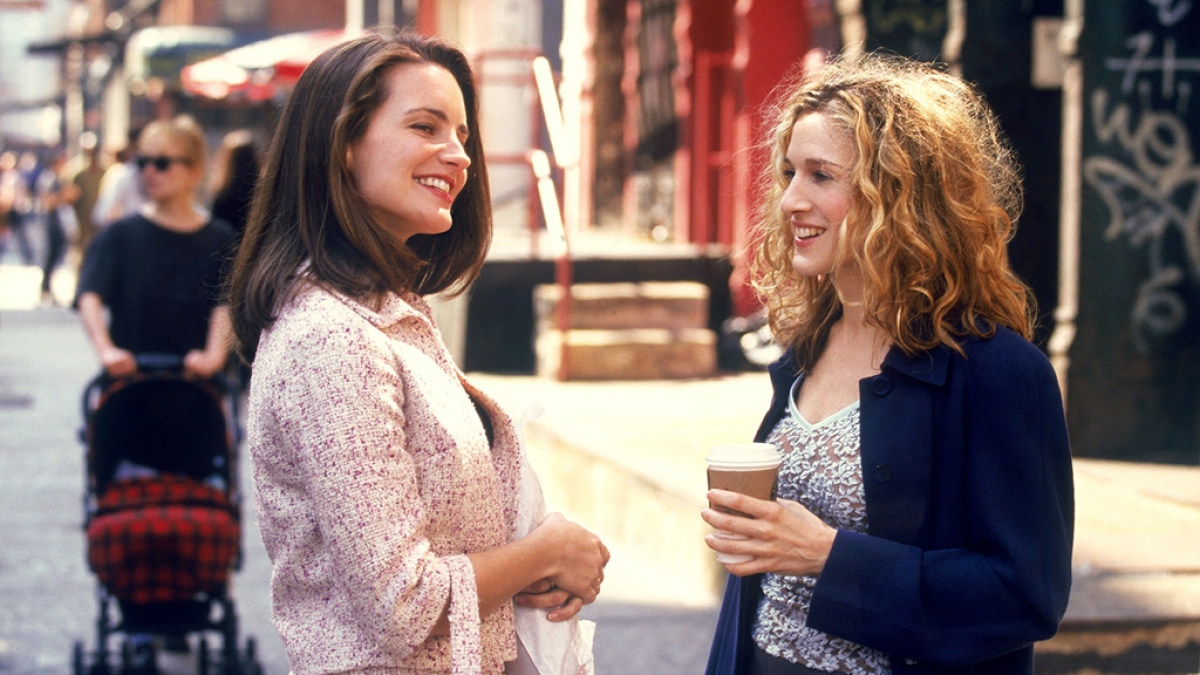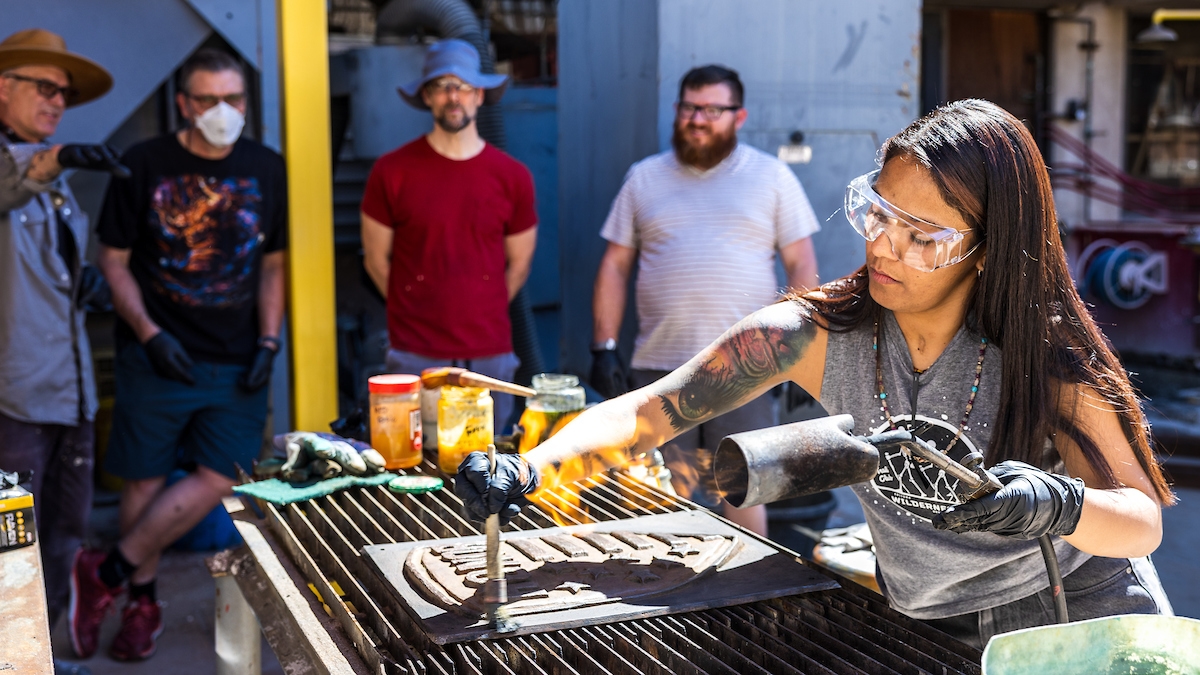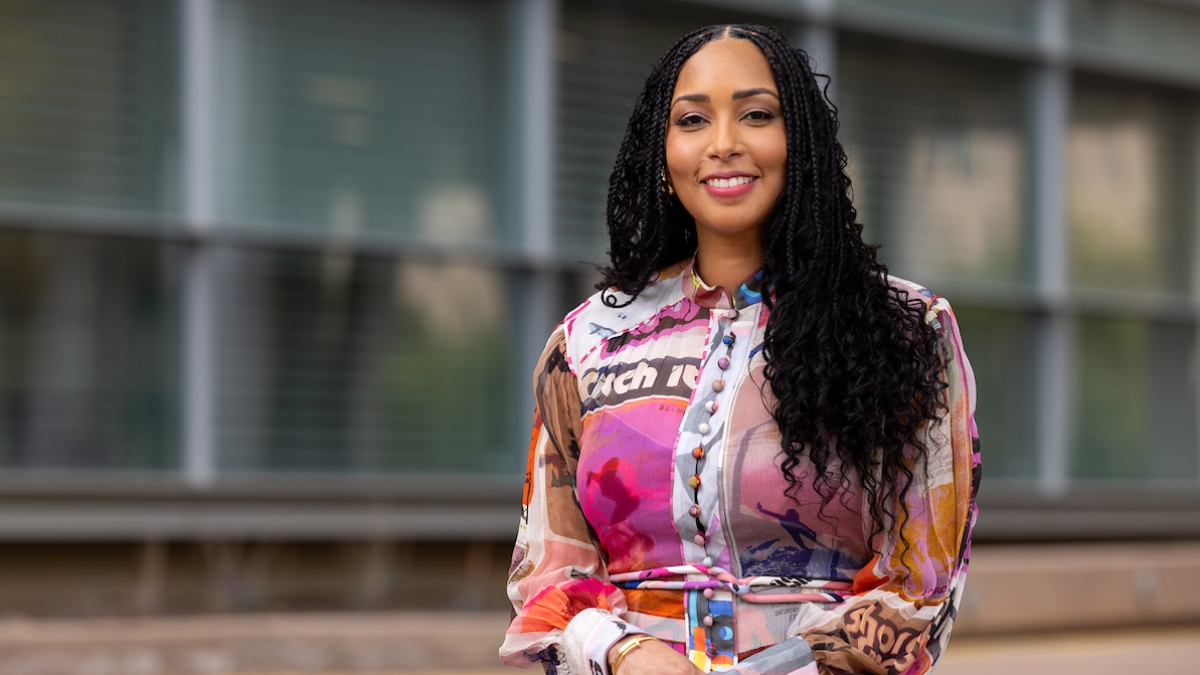How 'Sex and the City' pushed the evolution of female characters in movies, TV
Women and gender studies class explores female sexual agency as reflected in popular culture

A hit comedy series that helped to shape the image of the modern-day woman has been adopted into a gender studies class at Arizona State University. And like the show, it continues to get big ratings from students.
Michelle McGibbney’s “Sex and the City: Women, Sexuality and Popular Culture” is a seven-week online course that examines how women and sexuality have been depicted in American pop culture from the 1950s to the current day.
It’s also one of the most popular and highly anticipated classes at the university, drawing close to 1,000 students a year. Taught for over a decade, this course is offered year round and will commence again in January.
ASU Now spoke to McGibbney about the three-credit course and why it continues to resonate.
Michelle McGibbney
Question: Your program has a course named after "Sex and the City," the popular HBO series. In your opinion, was that show the tipping point in terms of accurately reflecting/depicting the modern-day woman and ideologies of gender and sexuality?
Answer: "Sex and the City," I think, was influential and appealing to a modern-day audience because it was less apologetic about its representations of women than we had seen. It challenged mainstream images and crossed — for some — into an uncomfortable area, examining issues that obviously existed but weren’t so openly discussed. Adoption, abortion, breastfeeding and other topics surrounding the politics of reproduction that women in modern-day America face were seen throughout the course of this show. Plus, these four women, who shared a strong bond, openly and honestly discussed sexual issues that are considered taboo, but only because they are women.
However, at the same time, in terms of it being a tipping point, we still see a rather familiar formula. We still have four women who meet the beauty standard and are set up for the male gaze. We also have the implications of race and class with these four white women who live in New York City and represent consumption. And even though the show touched on lesbianism it was still very heteronormative.
Q: Some say the feminist movement of the 1970s was the first real glimpse into representations of the modern-day woman, yet it took several decades for their lives to be depicted on television. Why so long?
A: Well, I guess I would say we have always made some progress but even still today women are held to a double standard and to a beauty standard.
But even if you look at popular shows in the 1970s, you can see the impact the feminist movement had on these representations. Feminism made these shows happen, these shows speak to and from the culture at large. In the ‘70s, in a similar setting to "Sex and the City," we saw … Mary Tyler Moore (depicting) the single girl trying to make it in the city. While this show was groundbreaking for the time in terms of showing a single, working woman, what made this show nonthreatening was her ultimate goal of marriage and landing a man. Often, as scholars have suggested, when we see a single girl trying to survive or even thrive it often becomes a cautionary tale for women warning them of the dangers of not confirming to a so-called patriarchal life.
In the ‘70s, we also saw shows like "Wonder Woman," "Bionic Woman" and "Charlie's Angels" and while not entirely liberating — and extremely full of mixed messages where the characters are tough but sexy — it was still a change from the nuclear housewife, which had dominated TV.
Q: It took a premium channel like HBO in order to portray women without being watered down. How has that affected the other networks in terms of accurately portraying women?
A: I think censorship, self-censorship and even sponsorship plays a large role in what images we consume and where. Prime-time TV still caters to the idea that families and youth are watching and offers “safe” content. While technological advancements have made HBO and others available at your fingertips whether on your phone, computer, IPad, etc., I don’t think you can compare these types of channels to prime-time TV. Prime-time TV, I think, still largely has to cater to a much wider audience and because of this the images tend to be nonthreatening. Take "Will & Grace" for example; it has recently made a comeback. While we see a gay male character in the lead role, it is still what critics consider a “safe” comedy. As critics and scholars alike have pointed out Will is symbolically coupled with Grace and her relationships often outshine his. And of course, again we have four white characters living in New York City.
Where we really see progressive representations is now on streaming services like Netflix, Hulu and Amazon that offer niche content. These audiences are paying for specific content that meets their needs, content that unfortunately, network television can’t even touch or compete with.
Q: What current shows that better represent race, class, ethnicity and age are pushing the envelope in regard to women?
A: There are many shows today that push the envelope in one way or another. Whether we see more representations of LGTBQIA communities, women of color, aging women or even single moms, we have made great strides. But in terms of an intersectional analysis I guess I have yet to find a show that truly captures it all. "The L Word," "Girls," "Girlfriends' Guide to Divorce," "Ugly Betty," "Jane the Virgin," "Grace and Frankie," "Queen Sugar" and "Insecure" have all contributed to more diverse depictions and multifaceted characters, but we still have a long way to go.
Q: Do shows that use nudity help the case in gender equality or has this shifted?
A: There is a body positive movement that embraces all body types and sees nudity and personal agency over public displays of sexual expression as a possible form of equality. While this seems to be a great message there is also another side to this story that we can’t overlook. Let’s face it, there is a significant difference between the way male and female nudity is presented in the media. And I guess I would ask: Are these depictions we see on TV, in magazines and billboards even really about empowering women?
Women are held to a different standard in terms of the body. Women, from a young age, are taught the most important thing about them, their biggest asset or contribution, is the way they look. Nudity often does not represent equality for women because of the way in which their bodies are socially constructed. Women have been and continue to be set up for the male gaze and until we have more feminist women and men behind the camera producing, writing and directing, these very sexualized yet passive images of women will continue.
Q: Why do so many students take women and gender studies classes such as this course?
A: WSTWomen's Studies courses appeal to a very diverse audience of students from all majors for a variety of reasons. As a student in our class you learn about the historical, cultural and social forces that shape our society. Students are asked to challenge conventional wisdom about gender and explore new ways of viewing the world. Courses such as this offer a new perspective through an intersectional lens, one that encourages students to critically analyze the images they see and the messages that dominate the popular discourse and to examine the relationship between popular media and social change. We offer so many engaging courses that I think really resonate with students because it helps them to make sense of important current social issues that are shaping our society.
More Arts, humanities and education

'Devils in the Metal': ASU vet leads iron cast workshop for former service members
Bruce Ward believes everyone has a symbol of strength or resilience, and they have an obligation to find it. His happens to be a paper crane in an ocean wave. “It’s the idea that we are the…

ASU English professor wins Guggenheim Fellowship for poetry
The awards — and opportunities — keep piling up for Safiya Sinclair, an associate professor in Arizona State University’s Department of English. In mid-April, Sinclair received one of 188 Guggenheim…

Designer behind ASU’s brand named newest Herberger Institute Professor
Bruce Mau, co-founder and CEO of the Chicago-based holistic design consultancy Massive Change Network, has joined Arizona State University’s Herberger Institute for Design and the Arts as its newest…
